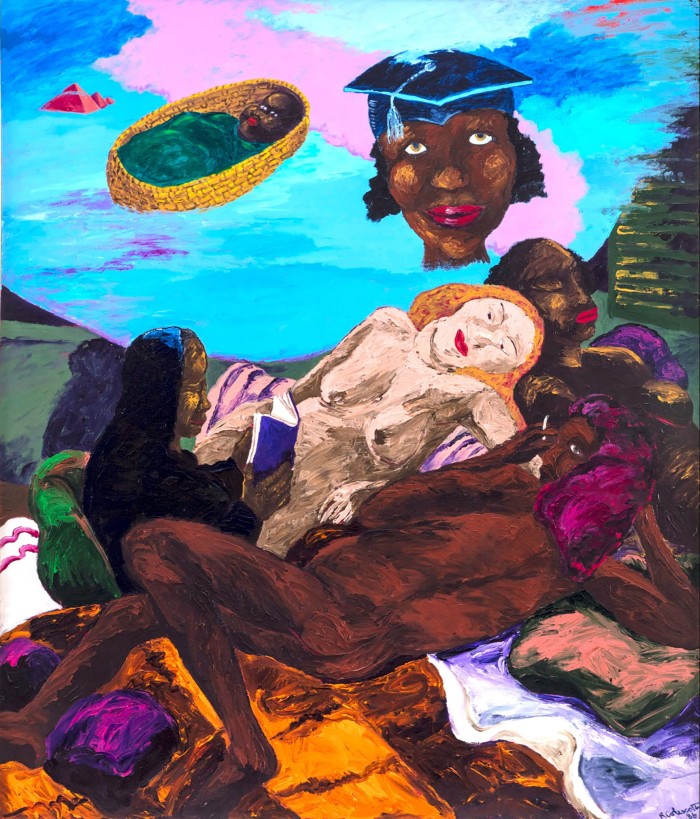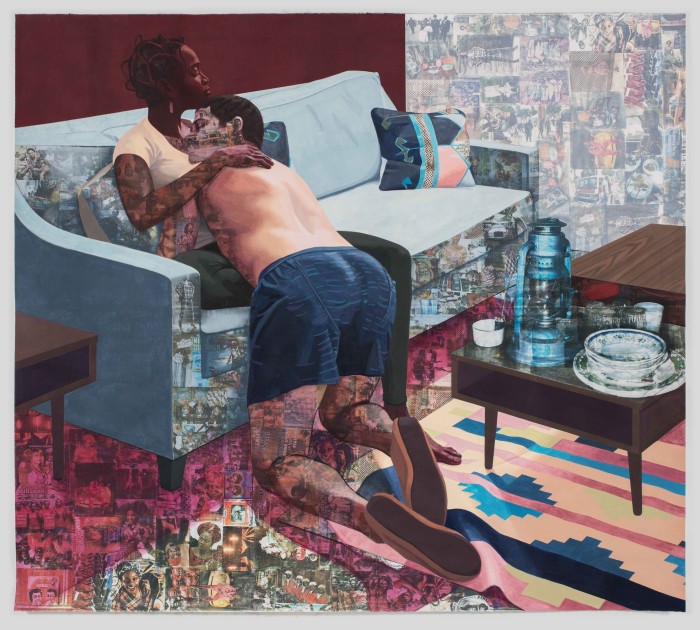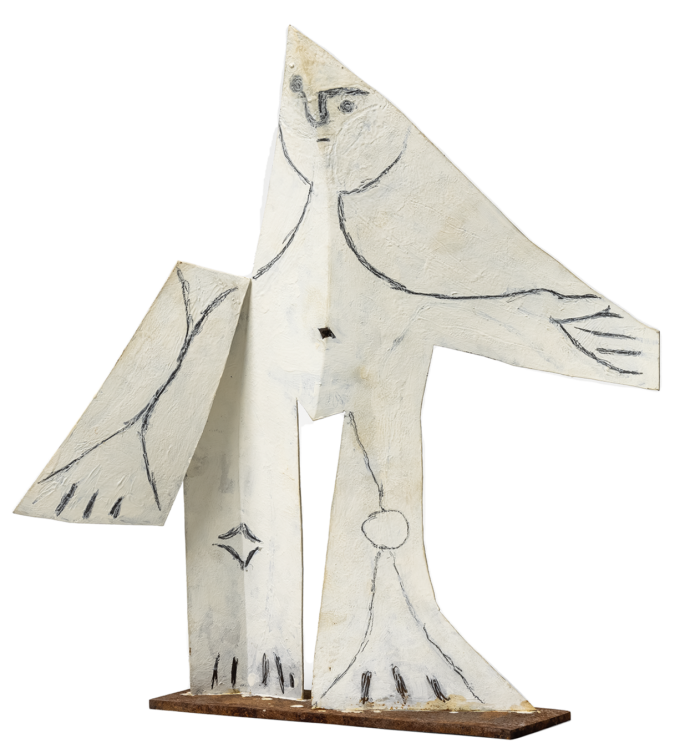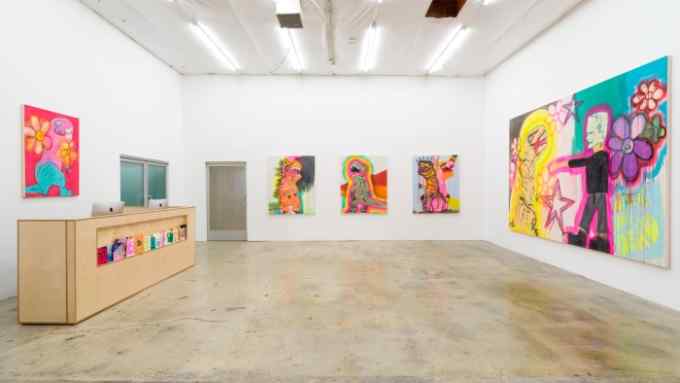Hammer Museum’s Ann Philbin: ‘We altered every square inch over these years’

Roula Khalaf, Editor of the FT, selects her favourite stories in this weekly newsletter.
When Ann Philbin moved from the Drawing Center in New York to head the Hammer Museum in Los Angeles in 1999, she thought she would just stay a few years — five max — and then move back to New York. The latter was, of course, the epicentre of the American art world, and LA was then regarded as something of a cultural backwater. “Well, it’s obviously many years later,” she says when we speak over Zoom. “I fell in love with my job — and the city.”
She had not even heard of the museum when the Hammer search committee contacted her. It took a call from Lari Pittman, an artist on that committee, to persuade her to visit. “When I first walked into the courtyard, I was very struck by the space and the potential it had to be a real cultural centre and a gathering space,” Philbin says. “I immediately thought, I know what this should be.” It could be closer to what the Drawing Center had been, but bigger, much bigger.
Her vision comes to fruition on March 26, when the final phase of the Hammer Museum’s renovation will be unveiled after a project lasting more than 20 years and costing $100mn. It will boast a new entrance on the corner of Wilshire and Westwood Boulevards, expanded exhibition and multi-use spaces, a chic restaurant and a presence on Wilshire spanning a whole city block. As Philbin says, “We altered every square inch of this museum over these years.”

There were practical and cultural reasons for coming to the Hammer after a decade at the Drawing Center. “It was time to make the next step, and in recent years I had been travelling to Los Angeles a lot to make studio visits with emerging artists . . . so I was very aware of the vibrant scene going on here.”
Under her leadership, she and her team have transformed a sleepy, rather obscure institution into a cultural cornerstone of the city. While the museum already had 45,000 drawing and prints in the Grunwald Center Collection and part of industrialist-founder Armand Hammer’s European and American paintings and drawings, Philbin started the contemporary art collection, which now numbers about 2,000 pieces, and oversees a vigorous exhibition and programming schedule. She launched a fundraising gala with diverse honorees, who often have a political edge — last autumn artist Charles Gaines and lawyer and transgender rights activist Chase Strangio. The museum’s budget has gone from $5mn a year when she took on the job to $25mn today, coming from fundraising, the endowment and UCLA.


During this time LA itself has changed — into a city featuring The Broad contemporary art museum, completed in 2015; the Academy Museum, devoted to cinema’s history, which opened in 2021; and, nearby, a new building for the Orange County Museum of Art, completed last autumn. Major construction for the Los Angeles County Museum of Art and the Lucas Museum of Narrative Art is under way. The gallery scene has exploded and a spate of New York galleries have been or are establishing outposts here, including Pace, Sean Kelly, Marian Goodman and David Zwirner.
From the beginning, Philbin’s managerial style has been decisive: shortly after her arrival, much of the curatorial staff was replaced and she even parted ways with arts patron Eli Broad, LA’s de facto Medici, a billionaire with a reputation for being controlling in business and in philanthropy. (He later relented and contributed to the Hammer.)

She knew they needed a master plan to redesign the museum, sited on a corner attached to the Occidental Petroleum building in Westwood. It had confusing entrances, galleries on two sides of an open-air plaza and only the shell of an auditorium. With architect Michael Maltzan, then early in his career, they crafted the master plan in 2003, discussing the changing role of the museum, and how spaces had to be flexible enough to be used for different kinds of exhibitions and programming. “From the very beginning she was challenging the role of the museum and how it could evolve in relation to a lot of pressing cultural and social issues,” Maltzan says.
Exhibitions and programming in the last two decades have included a comprehensive retrospective of Lee Bontecou in 2003, co-organised with the Museum of Contemporary Art, Chicago, an exhibition that celebrated an artist who was ahead of her time in the 1950s and 1960s. Thing: New Sculpture from Los Angeles in 2005 featured innovative work from artists such as Kristen Morgin and Kaz Oshiro; that show helped launch Made in LA in 2012, a biennial that focuses on artists based in southern California.
More recently, distinctive exhibitions have spanned a freewheeling visual essay on Joan Didion, curated by writer Hilton Als with the Hammer’s chief curator Connie Butler, and a gem of an exhibition, Picasso Cut Papers, featuring decades of Picasso’s work with cut, torn and folded paper.


Philbin has championed many artists and is reluctant when I ask about her favourites. But then she says: “Three different generations of artists come to mind when you ask for favourites — Lee Bontecou, Kara Walker and Lauren Halsey. All are fierce and fearless artists with utterly unique visions who I admire enormously.”
So what’s next? “We have to grow into these new spaces now,” she says. “Instead of it being the end of a chapter, it’s the beginning of a new one.”

Comments